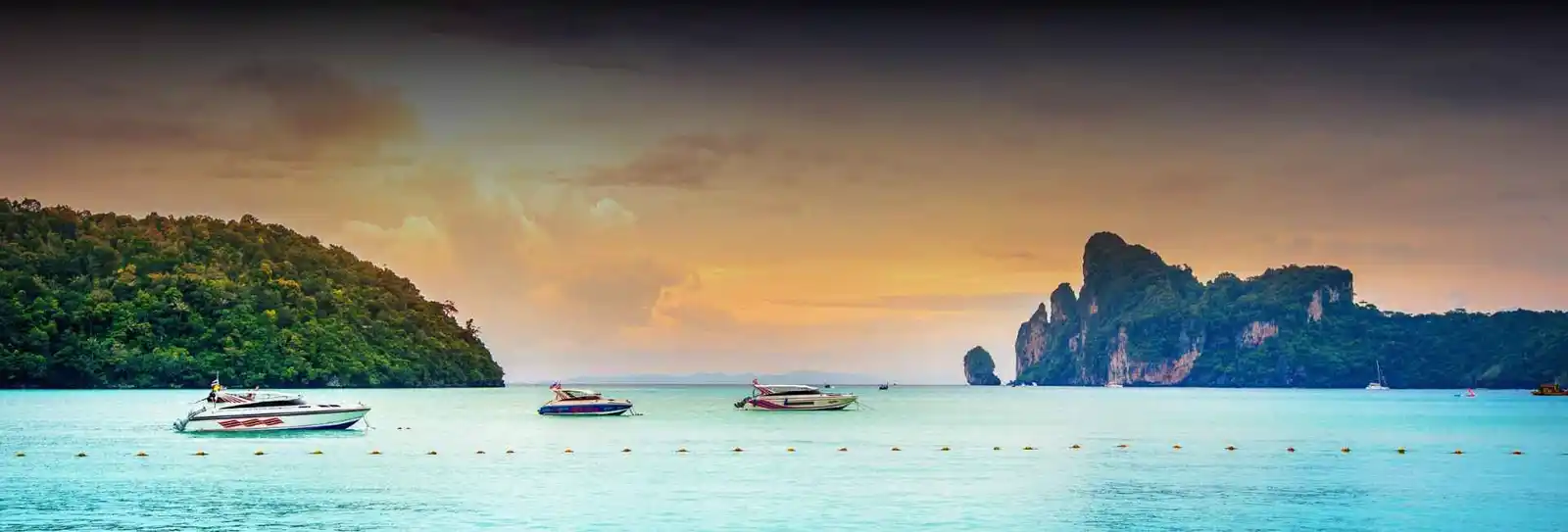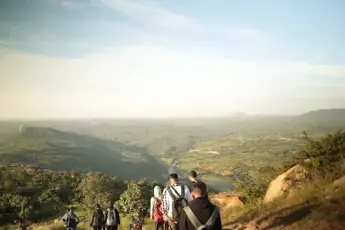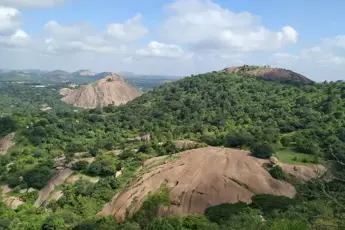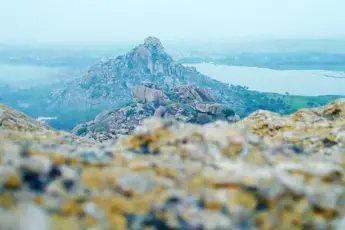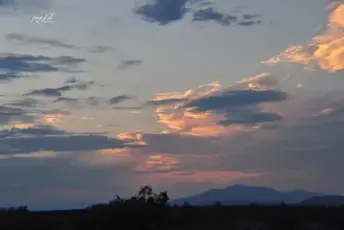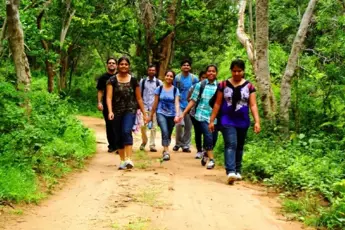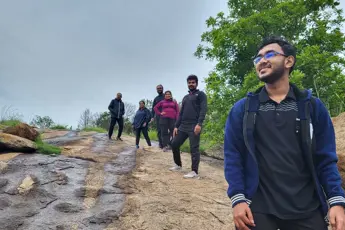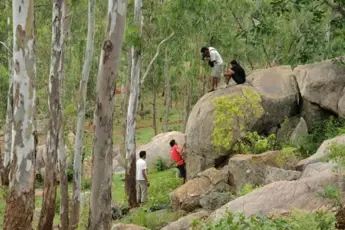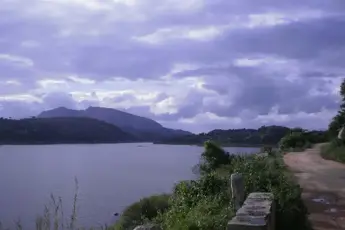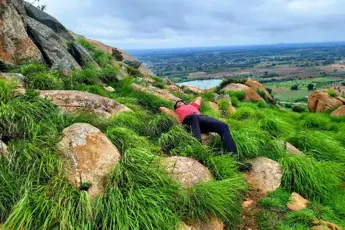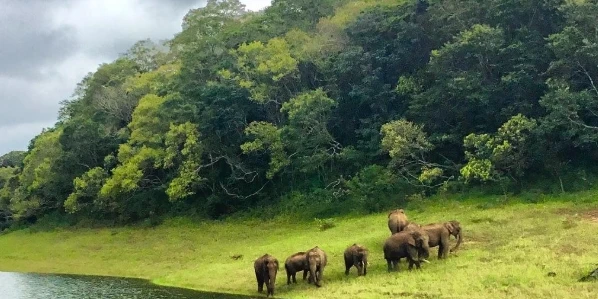
1. Periyar Wildlife Sanctuary, KeralaWith its diverse wildlife and natural beauty, the Periyar Wildlife Sanctuary is a famous protected area in Kerala's Thekkady. A sanctuary located in the Western Ghats covers an area of 925 sq. km, and it is home to resident elephants (Tigers), gaurs (Hebrid) birds (Reptiles included), as well as peaceful Periyar Lake, which was created by the Mullaperiyar Dam and serves as a natural wonderland for wildlife enthusiasts. History of Periyar Wildlife Sanctuary, KeralaThe tiger reserve was established as a primarily occupied tigers in 1978 under the Project Tiger initiative, after being converted into reserving it as its own wildlife reserve in 1950. By constructing the Mullaperiyar Dam in 1895, Periyar Lake was made artificial, which enhanced the ecosystem and provided fresh water to wildlife. The preservation of this area in southern India has become an impressive feat.Nearby Places of Periyar Wildlife SanctuaryKumil: Known for its spice farms and markets, Kumily is a tiny village.Mangala Devi Temple: Accessible only with unique authorisation, Mangala Devi Temple is an old temple buried deep within the forest.Murikkady: A picturesque area with cardamom, pepper, and coffee plantations.Chellarkovil Viewpoint: Chellarkovil Viewpoint presents sweeping vistas of the Tamil Nadu plains and cascading waterfalls.Best Time to Visit Periyar Wildlife SanctuaryOctober to March: Cool and comfortable conditions fit for forest exploration, boat safaris, and wildlife viewing.From April to May (Summer): Hot temperature, but ideal for observing animals close to the lake in search of water.Monsoon: June to September brings lush vegetation and fewer crowds, but severe rains may limit hiking and boat cruises.How to reach Periyar Wildlife SanctuaryBy Airport: Madurai Airport is 140 km away; Cochin International Airport is 190 km away.By Railway Station: Kottayam, 114kilometress distant, is the closest major train stop and is well connected to other principal towns.By Road: Periyar is accessible via roads. Regular bus and taxi service from Kochi, Kottayam, and Madurai to Thekkady.2. Binsar Wildlife SanctuaryBinsar Wildlife Sanctuary in Uttarakhand, tucked away in the Himalayas, is a peaceful forested region near Almora in the Kumaon region. Rising at around 2,420 meters, it stretches across 45 square kilometres. Hikers, bird watchers, and lovers of nature flock to Bindsar because of its peaceful atmosphere, sweeping views of the Himalayan mountains, and abundance of flora and animals. History of Binsar Wildlife SanctuaryHistorically, Binsar served as the Chand Kings' summer capital; they ruled the Kumaon region from the 7th to the 18th century. Combining ancient history with biodiversity, the region is of both ecological and cultural value. Founded in 1988 to preserve and safeguard the broad-leaf oak forests of the central Himalayan area, the sanctuary aims Historically, Chand Kings, who governed the Kumaon region from the 7th to the 18th century, made Binsar their summer headquarters. Combining ancient history with biodiversity, the area has cultural as well as environmental importance.Nearby Attractions of Binsar Wildlife SanctuaryZero Point: A well-liked vantage point inside the sanctuary offering panoramic views of Nanda Devi, Kedarnath, Trishul, and other Himalayan peaks is Zero Point.Almora: A cultural and heritage city famous for its handicrafts and temples is Almora.Jageshwar Temples: A group of more than 100 historic Hindu temples situated around 50kilometress from Binsar, Jageshwar Temples.Deer Park: A serene mountaintop shrine with vistas of the valley and spiritual undertones, Kasar Devi Temple. Set on the way to Binsar, Deer Park is excellent for brief hikes and fast wildlife viewing.Best Time to Visit Binsar Wildlife SanctuaryMarch through June: Great Himalayan peak visibility and ideal weather. Good for bird watching and trekking.October–December: Clear skies and cool weather make for ideal photographic and scenic vistas.July to September: The area gets much of rain, which makes routes slick and animal sightings uncommon.January–February: Cold and sometimes snowy, winter (January–February) suits people who like winter scenery.How to reach Binsar Wildlife SanctuaryBy Airport: The closest airport is Pantnagar Airport, 150 km away.By Railway Station: Kathgodam (120kilometress) is the nearest railway station, linked to Delhi and other large cities.By road: Binsar is easily accessible to Almora (33 kilometres), Nainital, and Kathgodam, as well as other communities. There are buses and taxis.3. Namdapha National Park, Arunachal PradeshAt heights ranging from 200 meters to morethan 4,5000 meters over 1,985.55 square kilometres, Namdapha National Park in Arunachal Pradesh's Changlang district is India's third-largest national park and the largest protected region in the Eastern Himalayas. Among unusual species found in this biodiversity hotspot are the snow leopard, clouded leopard, Hoolock gibbon, and over 400 bird species. Four big cats, the tiger, the leopard, the clouded leopard, and the snow leopard, are seen together there, among the few locations on Earth. Called a national park in 1983 and a wildlife reserve in 1972, Namdapha is noted for its rich and distinctive vegetation. History of Namdapha National ParkDeclared a wildlife sanctuary in 1972 and a national park in 1983, Namdapha has been appreciated for its great and unusual biodiversity. Located within the Indo-Myanmar biodiversity hotspot, its remote and rough terrain has helped retain its pristine natural environment. Called a national park in 1983 and a wildlife reserve in 1972, Namdapha is noted for its rich and distinctive vegetation. At heights ranging from 200 meters to morethan 4,5000 meters over 1,985.55 square kilometres, Namdapha National Park in Arunachal Pradesh's Changlang district is India's third-largest national park and the largest protected region in the Eastern Himalayas. Among unusual species found in this biodiversity hotspot are the snow leopard, clouded leopard, Hoolock gibbon, and over 400 bird species.Nearby Places of Namdapha National ParkMiao: Miao is a little village with simple lodging and nearby markets, and the entry point to Namdapha.Deban Forest Rest House: Found inside the park, Deban Forest Rest House offers a beautiful riverside rest stop and a beginning point for hikes.Tibetan Refugee Settlement: Near Miao, the Tibetan Refugee Settlement displays traditional crafts, lifestyle, and culture.Noa-Dihing River: Ideal for bird watching and photography, the scenic Noa-Dihing River runs throughout the park.Dibrugarh: Famous for tea gardens and a transport hub to Namdapha, Dibrugarh is a significant city in Assam.Best Time to Visit Namdapha National ParkOctober to March: October through March are the ideal months to travel to Namdapha. Perfect for bird viewing, hiking, and wildlife safaris, the climate is dry and cool.April to June: Temperatures begin to rise, and animal sightings might become less common; the forest remains lush and green.July to September (Monsoon): Heavy rain, slick terrain, and roadblocks prevent travel during this time.How to reach Namdapha National ParkBy Airport: Assam's Dibrugarh Airport (160 km) is the closest one. From there, move by road to Miao, the entrance of the park.By train: Connecting to Guwahati and other significant cities, the closest large train station is Tinsukia (140 kilometres).By Road: Namdapha is accessible via Miao, which is well-connected by road from Dibrugarh, Tinsukia, and Itanagar. These cities have taxis and buses.4. Bhimashankar Wildlife Sanctuary, MaharashtraBhimashankar Wildlife Sanctuary sits in the Sahyadri ranges of the Western Ghats in Pune district, Maharashtra, India. Among other creatures, this protected area, covering some 131 sq. km, is known for the threatened Indian Giant Squirrel (Shekru). The sanctuary encircles the sacred Bhimashankar Jyotirlinga Temple, generating a blend of natural and spiritual beauty. Established in 1984 to protect the habitat of the Indian Giant Squirrel, Bhimashankar Wildlife Sanctuary is among the Western Ghats, a UNESCO World Heritage Site. The religious significance of the temple derives from the presence of the historical Bhimashankar Temple, among Lord Shiva's twelve Jyotirlingas. History of Bhimashankar Wildlife SanctuaryCreated in 1984 to safeguard the Indian Giant Squirrel's habitat, Bhimashankar Wildlife Sanctuary is part of the Western Ghats, a UNESCO World Heritage Site. The presence of the ancient Bhimashankar Temple, one of Lord Shiva's twelve Jyotirlingas, makes the sanctuary religiously important. The sanctuary encircles the sacred Bhimashankar Jyotirlinga Temple, generating a blend of natural and spiritual beauty. Established in 1984 to protect the habitat of the Indian Giant Squirrel, Bhimashankar Wildlife Sanctuary is among the Western Ghats, a UNESCO World Heritage Site.Nearby Places of Bhimashankar Wildlife SanctuaryBhimashankar Temple: A well-known Jyotirlinga shrine inside the reserve draws travellers all year round.Hanuman Lake: Hanuman Lake: Great for bird viewing, this tranquil lake is inside the sanctuary. Offers breathtaking views of the Sahyadris and the valley below.Nagphani Point (Duke’s Nose): Gupt Bhimashankar is a secret temple location for people interested in offbeat hiking and discovery.Gupt Bhimashankar: Nearby historical locations you may include on your schedule: Peth Fort and Shivneri Fort.Best Times to Visit Bhimashankar Wildlife SanctuaryOctober to March: October to March is ideal for travel. The weather is nice and ideal for trekking, bird viewing, and forest exploring.Summer: April to June gets somewhat hot, but morning or evening hikes can still be enjoyable.July to September (Monsoon): Though some pathways may be slippery, the sanctuary becomes brilliant green and lovely.How to reach Bhimashankar Wildlife SanctuaryBy Airport: Pune International Airport is closest at 110 km.By train: Well linked to all major cities, Pune Junction is the nearest railway station.By Road: Bhimashankar is around 110 kilometres from Pune and 220 kilometres from Mumbai by road. You can reach the sanctuary by means of state transport buses, taxis, and personal vehicles.5. Sathyamangalam Wildlife Sanctuary, Tamil NaduLocated in the Erode district of Tamil Nadu, the Sathyamangalam Wildlife Sanctuary is one of the most extensive and ecologically diverse wildlife sanctuaries in South India. Separating the Bandipur and Mudumalai tiger reserves, this wildlife corridor spans 1,411 sq. km and links the Western and Eastern Ghats. Tigers, elephants and gaur and leopards are among the many animals that can be found at the sanctuary. History of Sathyamangalam Wildlife SanctuaryA private tiger reserve at Sathyamangalam was established in 2013 through Project Tiger, which was initially designated as sylviculture. This change is significant. Veerappan's former forests have been treated with environmental pride by the elephants and tigers who are now living there. This is an illustration of their conservation efforts.Nearby Places of Sathyamangalam Wildlife SanctuaryBannari Amman Temple: Bannari Amman Temple, situated next to the sanctuary, is a well-liked spot for tourists.Bhavanisagar Dam: Near the Bhavanisagar Dam, there are numerous picnic areas and nature walks that are popular..Sathyamangalam Town: Sathyamangalam has its markets and dishes of Tamil descent.Mudumalai & Bandipur National Parks: During an extended tour, wildlife can be seen in the Mudumalai and Bandipur National Parks.MM Hills and Dhimbam Ghat: Popular trekking destinations include the MM Hills and Dhimbam Ghat, which offer scenic drives.Best Time to Visit Sathyamangalam Wildlife SanctuaryOctober to March: From October to March, it is recommended to plan a visit during the dry and enjoyable months. The warm season is ideal.April to June: Wildlife can be seen near waterholes during the warm summer months, from April to June, making it an ideal time for safaris. This is the ideal location to spot birds and other animals.July to September (Monsoon): From July to September (Monsoon), road access is problematic for many visitors, who experience a mix of light and humid rain, often followed by greenery. Safaris are currently unavailable.How to Reach Sathyamangalam Wildlife SanctuaryBy Airport: Could you inform me about the Coimbatore International Airport, which is situated 65 km away from your residence?By Railway Station: About 65 km separates it from the railway station of Erode and Coimbatore.By Road: A road system connects Coimbatore, Erode, and Mysore to Sathyamangalam town. There are unmistakably buses and taxis at hand.Why Book with escape2exploreWhen exploring Wildlife Sanctuaries and Treks from Bengaluru and beyond, escape2explore stands out as a trusted name in adventure and experiential travel. Here’s why hundreds of travellers choose us for their getaways:Trusted, Well-Reviewed Local Operator: escape2explore has gained the trust of thousands of content tourists all over India. With persistent positive feedback and an unblemished reputation for delivering quality experiences, we assure you that your experience will be hassle-free, memorable, and value-packed. Our insider local knowledge guarantees that you will always be in safe hands.Seasoned Guides: Our trips are led by friendly, trained, and professional guides who are passionate about the outdoors and your safety. Whether it's a beach trek, a cultural tour, or a spiritual walk through temples, our team knows the terrain, the stories, and how to make each moment count.Safe & Curated Itineraries: Your safety is our number one priority. Our tour packages are thoughtfully crafted with safety measures, researched accommodations, and easy travel arrangements. We take care of the details so you can have the experience hassle-free and worry-free.Unique Experience That You Won't Find Anywhere Else: With escape2explore, you discover more than the tourist attractions. We go off the beaten track with hidden beaches, unusual treks, offbeat cultural destinations, and true interactions.Read: Solo Trekking in India |Kedarkanth vs Brahmatal |5 Underrated Treks|Top 7 Treks|Instagrammble Treks in India


